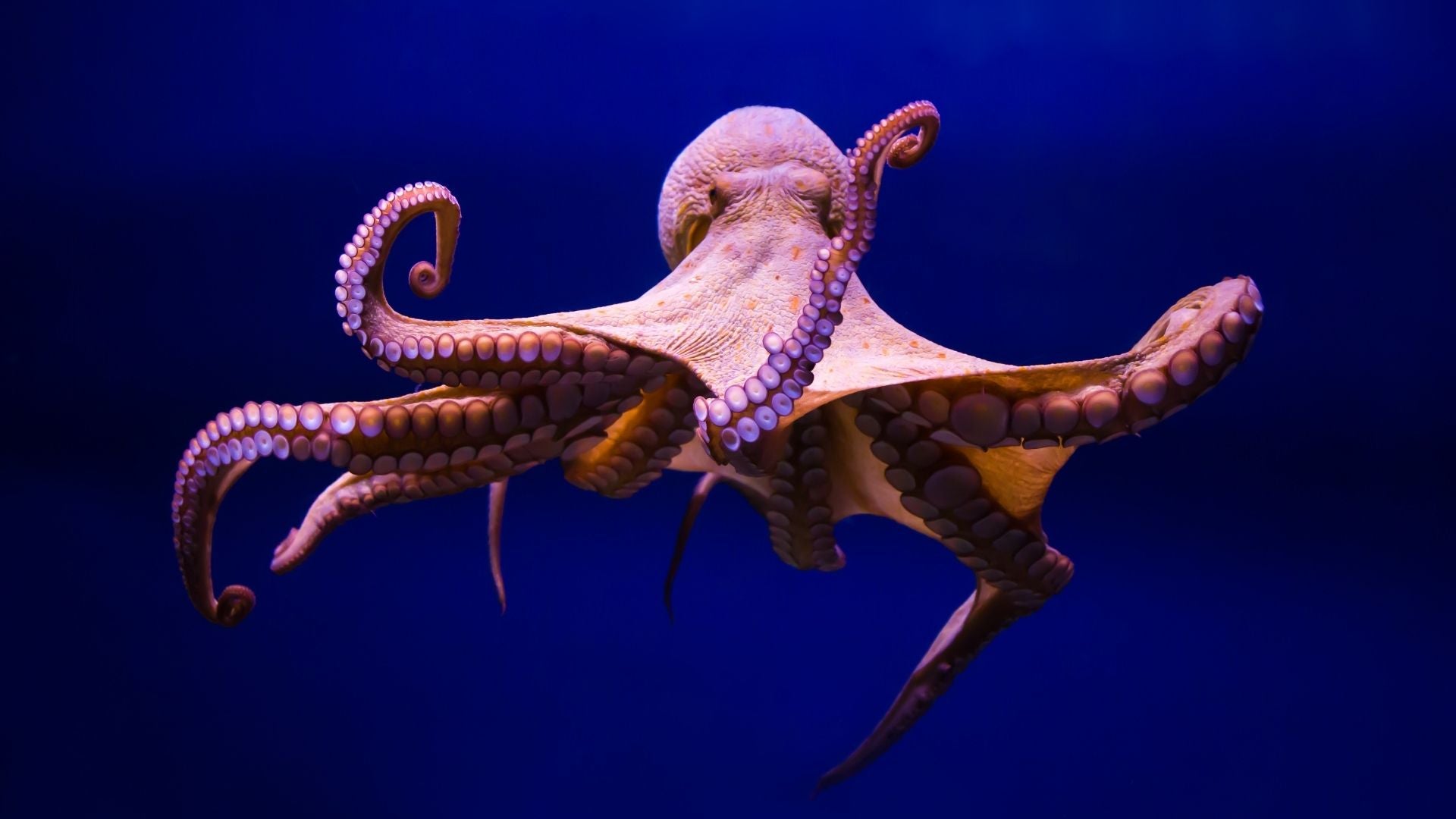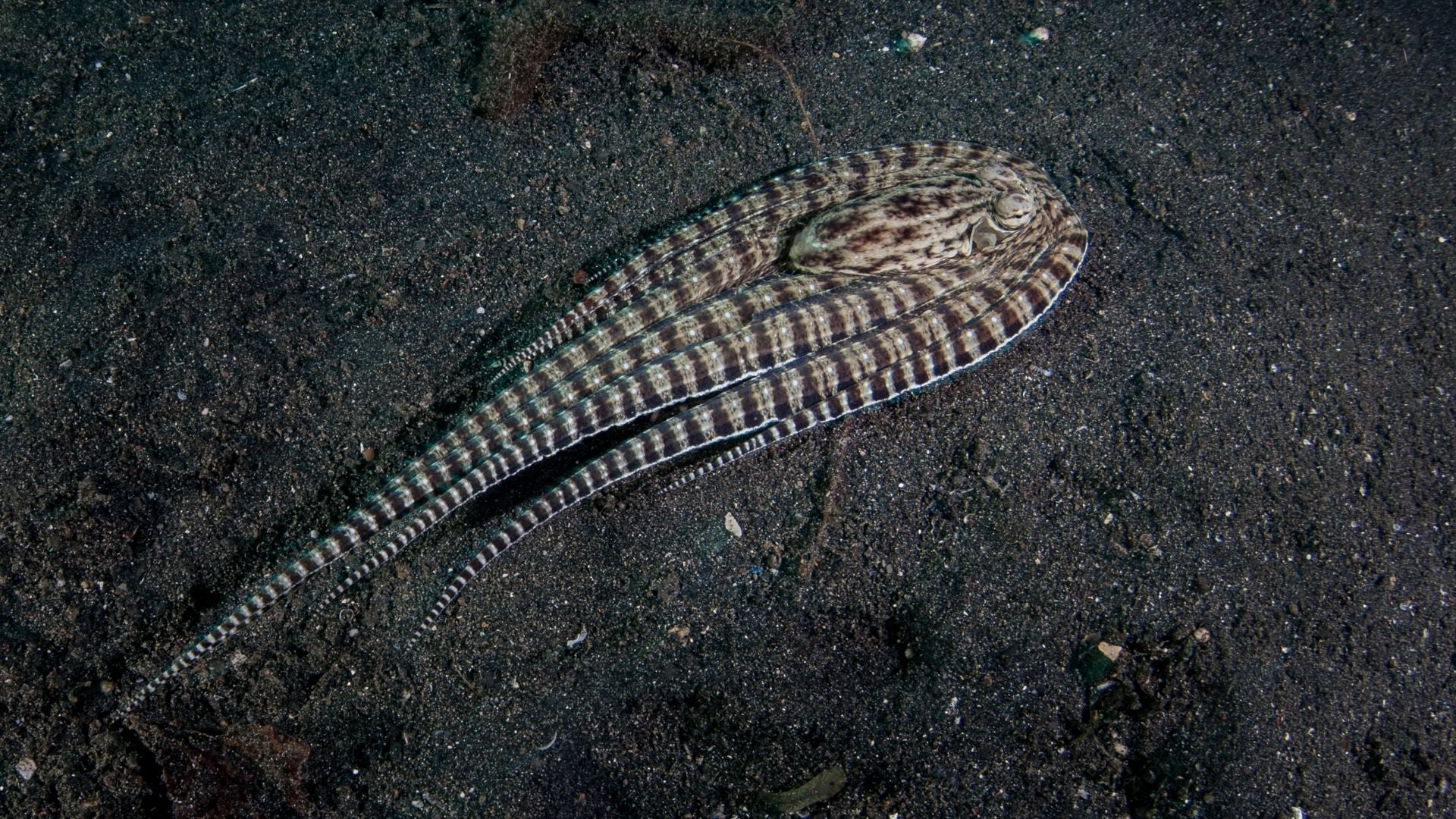
Octopuses (a member of the cephalopod family alongside squid and cuttlefish) are one of the most distinctive creatures on the planet.
Instantly recognised for having long, bulbous heads like rastacaps and a canopy of colourful, sucker lined legs, they are almost cartoonish in their physical form. However, when it comes to their intellectual and emotional capabilities, they are even more unbelievable.
There are nearly 300 species of octopus in the world, ranging from the giant pacific octopus (30 feet long) to the tiny wolfi octopus (1 inch long). They’ve been around for millions of years, but with a general lifespan of only 1-2 years, octopuses have adapted to suit changing ocean landscapes and developed some incredible skills and character traits along the way.
Read on to learn why the octopus truly is a one-of-a-kind creature…
1. Cephalopods Are Blue-Blooded
Haemoglobin is a protein containing iron that is found in the red blood cells. An octopus’ protein, however, is called Hemocyanin, and it contains copper instead.
To survive in the ocean’s depths, an octopus’ blood needs to be able to operate effectively throughout the body in sub-zero temperatures and super-low oxygen levels, and copper is proven better at doing this than iron. Hemocyanin also absorbs all colours except blue (which it reflects) meaning an octopus is literally blue-blooded.
2. They Have Nine Brains & Three Hearts!
Biologically, cephalopods are smart and sensitive. In addition to a central brain located between the eyes, octopuses have mini-brains at the base of each of their eight tentacles. If that isn’t remarkable enough, they also have three hearts (one to circulate blood around the body, and two to pump it past the gills to pick up oxygen).
There are many anecdotes about octopuses in captivity exhibiting cunning and playful behaviours. Not just known for solving puzzles, opening jars and finding ways of escaping their enclosures, octopuses have been found dismantling plumbing pipes and squirting water at lights to cut out the electricity – just for fun!
They also appear to be able to recognise other species, including humans. At the University of Otago in New Zealand, it was reported that an octopus took a dislike to one of the staff. So, every time she passed the tank, the octopus would shoot a jet of water in her direction.
A recent example of their incredible recall and sentient nature is in the Netflix documentary, ‘My Octopus Teacher’. Winning the Academy Award for Best Documentary Feature in 2021, the film follows naturalist Craig Foster over the course of 12 months as he forms a friendship with a wild, common octopus in a South African kelp forest.

3. Their Arms Are Independent (And Edible!)
Octopuses are tenta-cool! Known as the eight-armed cephalopods, they technically have eight tentacles – six arms and two legs – which literally have a mind of their own.
Octopuses crawl around using two limbs located on the rear of their bodies, and the other six limbs are used for feeding, swimming and propulsion. An average octopus has over 200 suckers on their tentacles, which they use to grip objects and catch prey with.
As previously mentioned, two-thirds of an octopus’ neurons reside in its arms, not its head, meaning their arms can do one thing, whilst the brain and the body focuses on something completely different. They have a neural ring that bypasses the brain, so the arms can send information to each other without the brain being aware of it.
Following 2,000 observations of octopuses in 2008, scientists concluded that cephalopods are ambidextrous and can regrow severed limbs in just over 4 and a half months. More on the odd side, they also discovered that octopuses can be tempted to eat their own tentacles if they are in an environment that lacks stimulation (aka they’re bored). This is known as autophagy.
4. They’re Underwater Architects
Octopuses pile up anything they can find from natural objects like rocks and broken shells, to marine debris such as broken glass and bottle tops. They’ve been known to build hidey-holes and to use stones as door-like shields to protect the entrance, but did you know they build deep-sea cities as well?
In 2009, a few veined octopuses were observed collecting coconut shells in Indonesia. After digging them up, they gave them a clean with jets of water and then carried them to a new location and assembled them.
In 2012, scientists discovered a whole marine metropolis in Jervis Bay, Australia (dubbed Octopolis). Made from discarded clam and scallop shells, it housed 15 octopuses.
5. They Can Camouflage
Cephalopods can change their colour and appearance to avoid predators. Their super soft bodies change texture and shape to match their surroundings, but if those camouflage tactics don’t work, octopuses can do disappearing acts by releasing a cloud of ink as a decoy.
The mimic octopus (as the name suggests) is the best at doing this, and it can also impersonate other marine animals, which is a technique known as “deceptive resemblance.”

6. They Die Bringing New Life
Like most creatures, the need to mate is a biological instinct, but for octopuses, it comes at a great cost.
Male octopuses lack external genitalia and instead use a modified arm to pass their sperm to the female. However, mating triggers a quick decline in health, and male octopuses typically die within a couple of days or weeks (if they’re lucky enough to not get eaten by the female during reproduction!)
Females don’t have it much better. They can lay up to 400,000 eggs and tend to them day and night, but once the eggs hatch, her body will start to shut down and she’ll die within months.
7. They Have Many Pop Culture Connections
Cephalopods have inspired many myths and legends throughout history. Often labelled “monsters of the deep”, they have made many appearances in stories, films, songs and TV shows over the years.
Perhaps the most famous is the Kraken. A giant sea monster, it originated from Scandinavian folklore and according to their tales, lives off the coasts of Norway and Greenland, terrorising sailors. It’s been referenced in many fictional works, from Jules Verne and Marvel Comics, to ‘Clash of the Titans’ and ‘Pirates of the Caribbean.’
Other octopus and octopus-like creatures to feature heavily in popular culture include Dr. Otto Octavius (Spider-Man), Ursula (The Little Mermaid), Squidward (SpongeBob SquarePants), Hank (Finding Dory), and The Beatles song ‘Octopus’s Garden’. And who could forget Paul the Psyhic Octopus and his world cup winner predictions!
8. They Are Threatened By Humans & Climate Change
Although octopuses are not considered endangered, they are becoming a more at-risk species.
Noise pollution in our oceans as a result of offshore drilling, ship motors and sonar use can cause severe acoustic trauma in cephalopods, with prolonged exposure leading to lesions in their auditory structures. A reduction in their main food source due to overfishing is also becoming a more prominent threat, as well as chemical run-offs and plastic and sunscreen pollution.
Global warming is an ever-present concern too, as an increase in water temperature (even as little as 3°C) can trigger an octopus egg to hatch prematurely, decreasing its chance of survival.
So, now that you’re armed with some fascinating facts about octopuses, we hope you love them as much as we do, and will think about switching to a reef-safe sunscreen brand like People4Ocean to better protect them.



Comments (0)
Back to Blog